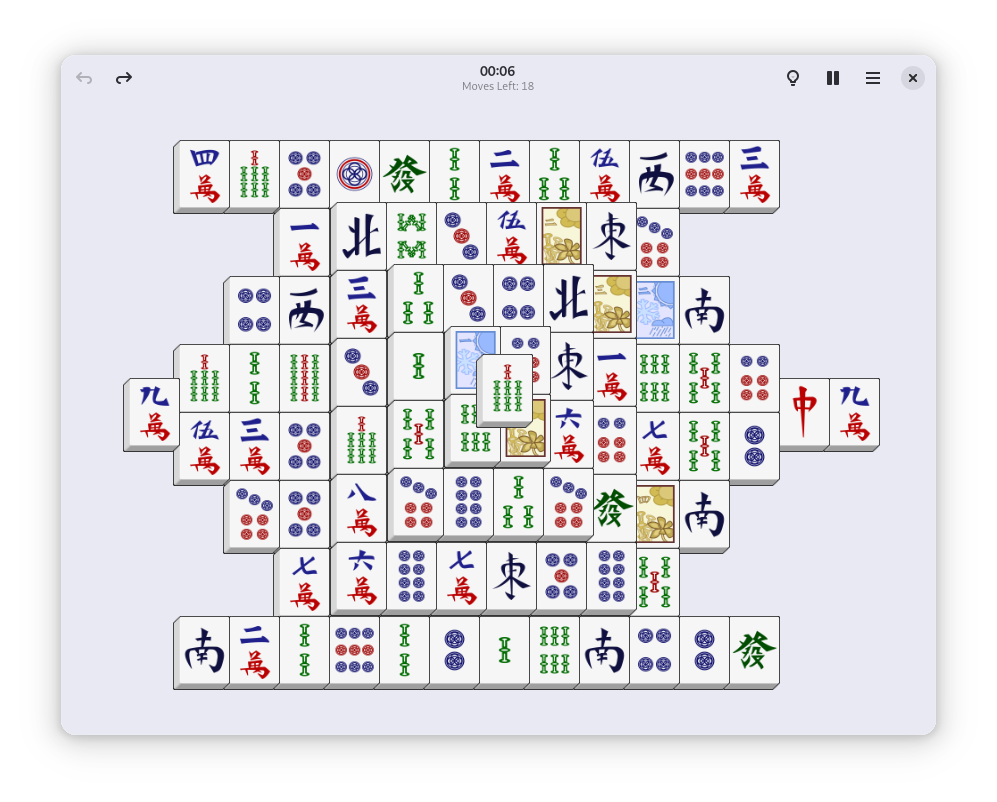I’ve always liked the concept of small five-minute games to fill some time. Puzzle games that start instantly and keep your mind sharp, without unnecessary ads, distractions and microtransactions. Classics like Minesweeper and Solitaire come to mind, once preinstalled on every Windows PC. It was great fun during moments without an internet connection.
Unsurprisingly, GNOME provided a collection of similar games since its initial release, preinstalled on several Linux distributions. Although GNOME no longer ships an official game collection, its games live on as separate modules on GNOME GitLab, and I’ve continued playing some of them to this day.
O maintainer, where art thou?
Unfortunately, several games have become unmaintained in recent years. While the games more or less work as expected, users still send occasional feature requests and bug reports that remain unanswered, and the UIs drift further away from modern standards (GTK 4 + libadwaita) each year.
One game stuck in an unfortunate state was Mahjongg (a Mahjong Solitaire clone), suffering from issues such as high CPU usage and freezes when playing the game. While fixing the issues was easy enough, distributing the fixes proved more difficult, with nobody left to include them in a new release.
One year later
After unsuccessfully hunting for poor souls willing to make a new release, my journey as Mahjongg’s new maintainer began a year ago. While my initial plan was to make a single release fixing critical bugs, modernizing the UI and fixing other long-standing issues turned out quite fun in the end. Here are some of the highlights since then:
- All old issues/feature requests addressed and closed (some dating back over a decade)
- Several improvements contributed by users (sequential/random layout rotation, remembering game state between sessions)
- Fixes for various bugs and memory/resource leaks
- Performance improvements, avoiding several seconds of delay when starting the game and changing layouts
- Modernized Scores dialog and other UI/UX improvements, following the latest GNOME Human Interface Guidelines
- Improved tile reshuffling that avoids unsolvable tile arrangements when possible
- Tile drawing ported from Cairo (CPU-based) to GtkSnapshot (GPU-based), for more efficient drawing and less work porting to GTK 5 in the (far) future
Applying for GNOME Circle
It’s perhaps no secret that the old GNOME games are stuck in an awkward place, with some still using legacy GNOME branding despite no longer shipping with GNOME. In search of a better future for Mahjongg, I applied for its inclusion in GNOME Circle, a collection of high-quality apps and libraries that extend the GNOME ecosystem. After good initial impressions, thanks to recent modernization efforts, Mahjongg is on track for inclusion.
Since GNOME Circle currently lacks other games, I would love to see more small games added in the future, whether it be one of the old GNOME games or a completely new one. While it’s up to each maintainer whether or not they want to go through the effort, high-quality games deserve more exposure. :)
Closing words
Thanks to both the Release Team and the Infrastructure Team for helping me get started, as well as everyone who has contributed to Mahjongg so far. Thanks to everyone who helped write the GNOME Project Handbook, making the lives of contributors easier.
A few GNOME games are still unmaintained and use GTK 3:
If you enjoy a challenge, and are interested in porting a game to GTK 4 + libadwaita and maintaining it, perhaps this is the opportunity for you!

Leave a Reply to Mat Cancel reply